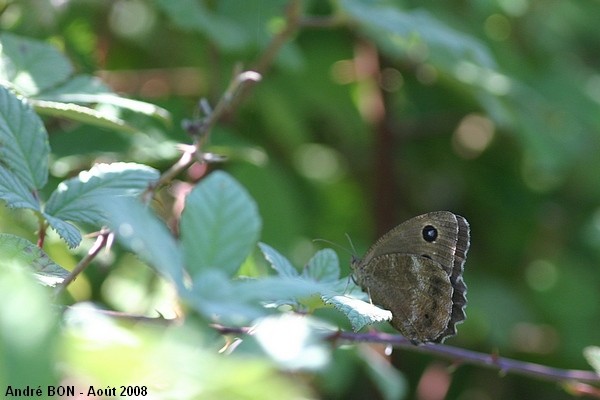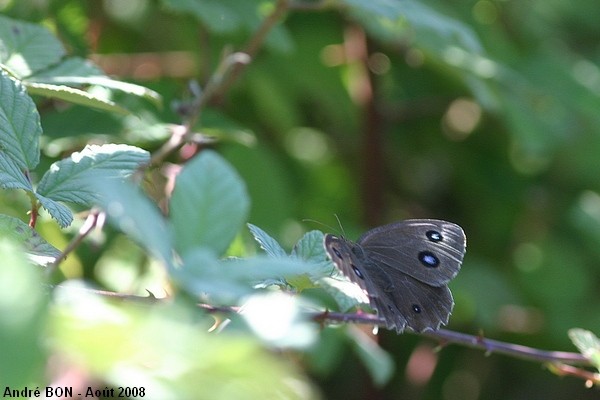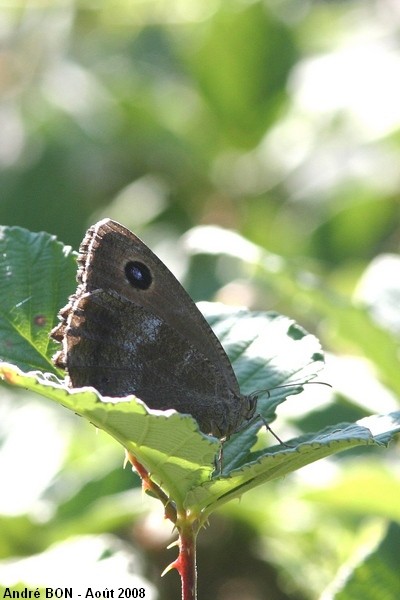


| Dryad (Minois dryas (Scopoli, 1763)) |



|
|
Scientific name: Minois dryas (Scopoli, 1763) Common name: Dryad French name: Grand nègre des bois Order: Lepidoptera Suborder: Rhopalocera Family: Nymphalidae Subfamily: Satyrinae Wingspan: 54-70 mm. Biotope: Open woodlands, shrubs, dry or damp bushy places. Geographic area: Southern and central Europe, central Asia east to Japan. Flight time: June to September. Number of generations : 1 Caterpillar: Pale yellowish brown with dark dorsal and lateral stripes. The head bears six dark stripes. Host plant: Various graminae like Purple Moor-grass (Molinia caerulea), Wood Small-reed (Calamagrostis epigejos) and Erect Brome (Bromus erectus). |
Males are a very dark brown colour, females are paler. The fore wings bear two bluish-pupiled, variable in size, eyespots. This differs from the Great Sooty Satyr (Satyrus ferula) which has white-pupiled eyespots. These eyespots are visible on both sides of the wings and are slightly larger on females. The hind wing margin is wavy, this also enables to tell it apart from the Great Sooty Satyr. The upper side of the hind wing shows a small eyespot near the margin. The under side of the hind wings is variable and may show a greyish white median stripe. The Dryad over winters as a caterpillar at the first stage of larval development. |
| [To know more about the Dryad] [Next picture] [Top] |

|
I have observed several Dryads in flight, but only one came to land a few seconds so that I have been able to shoot some pictures. |
| [To know more about the Dryad] [Next picture] [Previous picture] [Top] |

|
This picture is a little blurred but it's the only one where you can see the upper side of the wings. I am looking forward to the next observation of a kind Dryad to take a better picture. |
| [To know more about the Dryad] [Previous picture] [Top] |

|
I have read that this species has now disappeared from the Paris area, that's why I need to travel to the south of France to observe it. |